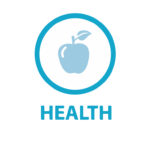
Substance Use
Ages 13-18 (Adolescence)
Note
*: Statistically unstable
Data not available:
Due to the revision of Gender and Race-Ethnicity categories, data prior to School Year 2022-23 were not included.
Race-Ethnicity categories:
Hispanic or Latinx, AIAN: American Indian or Alaskan Native, Asian or Asian American, Black or African American, NHPI: Native Hawaiian or Pacific Islander, White, Multi-Race: Mixed (two or more) ethnics, Something else
Source:
San Diego County. California Healthy Kids Survey, 2022-23: Main Report. San Francisco: WestEd for the California Department of Education.
Table A9.5 – During the past 30 days, on how many days did you use… one or more drinks of alcohol? … marijuana (smoke, vape, eat or drink)?
Table A10.4 – During the past 30 days on how many days did you use… cigarettes? … vape products?
Table A12.4 and Table A13.4
What is the indicator?
This indicator – the percentage of students in grades 7, 9, and 11 who reported use of cigarettes, e-cigarettes or other vaping device, alcohol, or marijuana in the prior 30 days—monitors a portion of substance use. These data are collected with the California Healthy Kids Survey, administered biennially to students in grades 7, 9, and 11.
Why is this important?
The consumption of tobacco, alcohol, and other substances can hinder an adolescent’s physical and mental growth. Research indicates that prolonged use of alcohol and drugs impacts academic achievement, mental well-being, interpersonal relationships, and future job prospects. The rising prevalence of e-cigarettes and vaping poses a growing concern. Similarly, the improper use of prescription medications (like OxyContin, Adderall, and Vicodin) carries significant repercussions and often persists into adulthood.
What strategies can make a difference?
These evidence-based strategies are used across the country to decrease youth substance use:
- Leverage coalitions and partnerships to educate youth, parents, and community members on the risks associated with substance use, the origins of these substances, and the trends in use across ages.
- Establish and uphold local regulations that prohibit the sale of tobacco, e-cigarettes, and alcohol to minors, as well as non-prescription substances prone to misuse (e.g., bath salts, spice).
- Foster youth development by cultivating resilience, resistance, and problem-solving skills, empowering them to withstand social pressures associated with substance use.
- Collaborate with parents, educational institutions, communities, and businesses to restrict youth access to tobacco, alcohol, illicit drugs, and non-prescription medications.
- Empower parents with the necessary skills to enhance family communication and bonding through evidence-based programs.